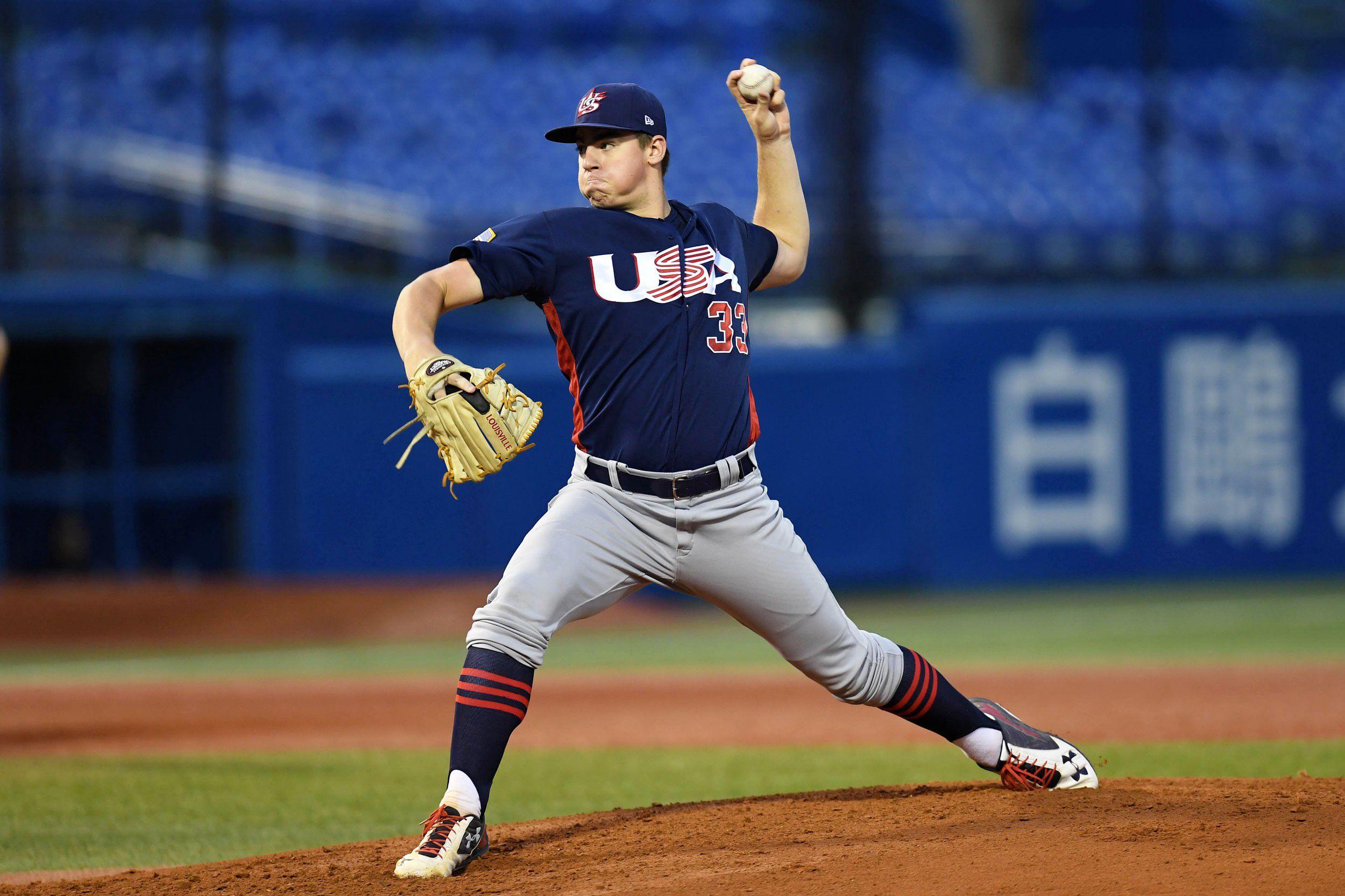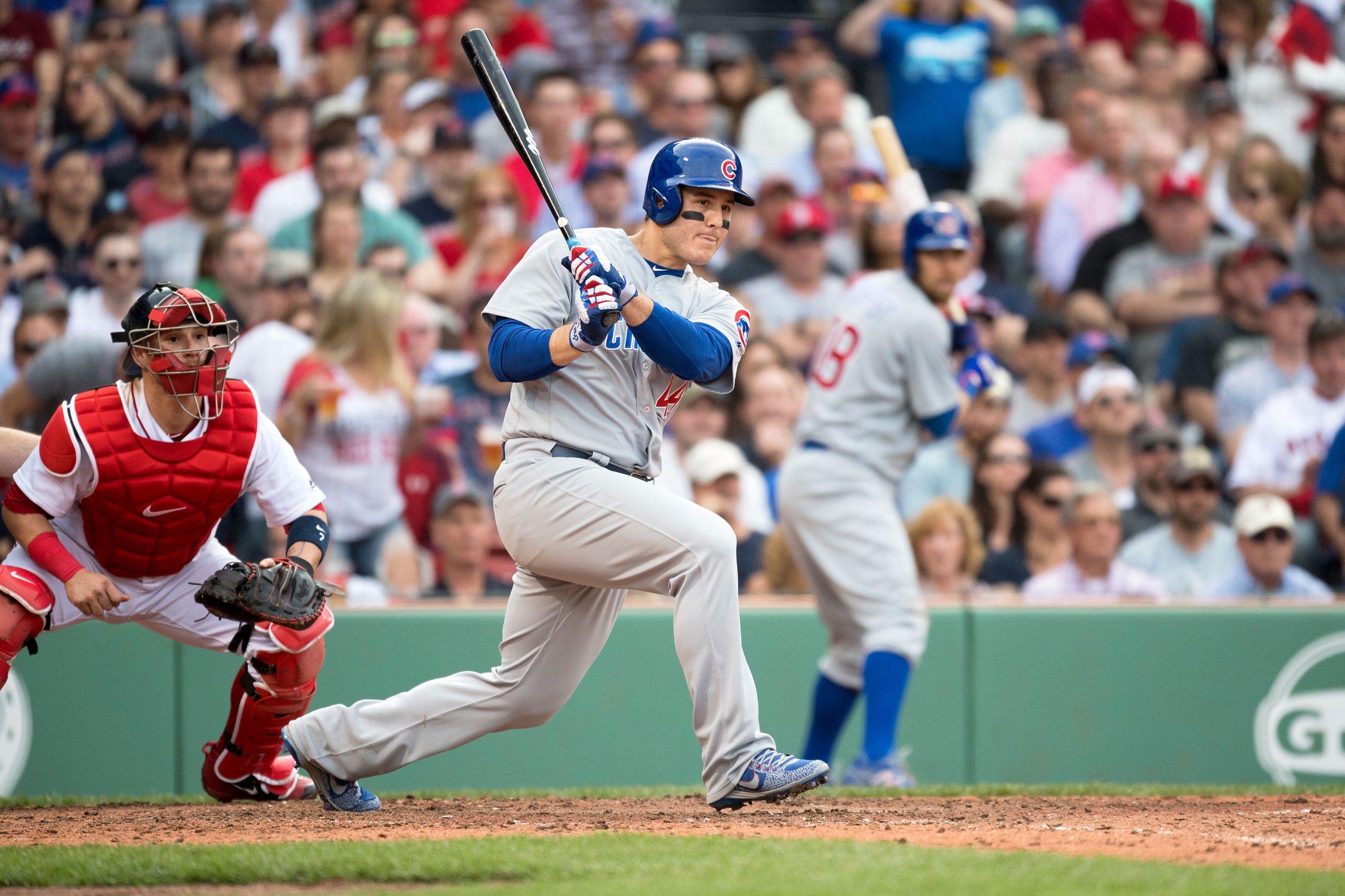The MLB draft is a wonderful event: The next wave of U.S. and Canadian talent gets distributed, and your favorite college second baseman still hasn’t discovered he can’t hit a professional curveball. Usually, I’m flipping out and shouting, "I love that guy, he’s awesome!" well into the final third of this three-day, 40-round affair that this year starts Monday night.
Except this year. I hate this draft class.

That’s not to say it isn’t good, insofar as we can answer that question without five or 10 years to watch these prospects’ careers pan out. It’s chock-full of two-way players at the top. High schooler Hunter Greene, Louisville’s Brendan McKay, and Virginia’s Adam Haseley could all go in the top 15, with Greene and McKay as virtual locks to go in the top five picks. Greene in particular has developed a following, earning lengthy write-ups by ESPN’s Keith Law and Baseball America’s Hudson Belinsky; both publications rank Greene as the draft’s no. 1 prospect. And, unusually for a high school baseball player, Lee Jenkins of Sports Illustrated also covered the 17-year-old at length. If Greene is drafted as a pitcher and not a shortstop, he could become the first high school right-hander ever to go no. 1 overall in the 52-year history of the draft.
McKay has been both a weekend starter and middle-of-the-order bat at Louisville, one of the top baseball programs in the country, since he was a freshman. This year, he’s almost tripled his previous career high in home runs while remaining one of the ACC’s top pitchers. McKay’s got a 2.31 ERA with a 12.1 K/9 ratio while hitting .356/.476/.683, which is like if Clayton Kershaw were also a better version of Anthony Rizzo when he’s not pitching. He’s as heavy a favorite to win the Golden Spikes Award as his schoolmate Lamar Jackson was to win the Heisman this past fall. And while he won’t play both ways as a pro, it’s not certain whether he’ll play first base or pitch in the pros — only because he’s good enough to do both.
So there’s star power. But the draft is missing my favorite kind of prospect: the college position player with big upside. In recent years the college position player has been the safest bet you can make at the top of the draft, and frequently, that bet can be placed without sacrificing star potential.
The top college players frequently can’t hack it in the pros, because many hitters thrived at a level where pitchers weren’t throwing hard, or with great command or off-speed stuff. But there’s a special kind of college player that has not only the talent to punish amateur opponents but the athleticism and intelligence to adjust quickly and do the same to professional opponents. Recent draft classes have been full of those guys in the top 15. Nobody from the 2016 draft has made the majors yet, but here are the college bats who went in the five drafts before that:
- 2015: Dansby Swanson, Alex Bregman, Andrew Benintendi, Ian Happ
- 2014: Kyle Schwarber, Max Pentecost, Michael Conforto, Trea Turner
- 2013: Kris Bryant, Colin Moran, Hunter Dozier, D.J. Peterson, Hunter Renfroe
- 2012: Mike Zunino, Tyler Naquin
- 2011: Anthony Rendon, Cory Spangenberg (junior college), George Springer
That’s 18 players in five years, and 16 have made the majors, while one of the exceptions, Pentecost, lost more than a full season to shoulder injuries. Bryant won an MVP award; Rendon has a top-five MVP finish under his belt; Turner finished second in Rookie of the Year voting in 2016; Naquin, Conforto, and Schwarber have been key figures on World Series teams; and Bregman and Springer could easily get there this year. The Cubs, who won the World Series thanks in part to a high hit rate on recent draft picks, just spent three straight top-10 picks on polished position players: Bryant, Schwarber, and Happ.
This year, if you count McKay and Haseley as position players, seven college position players made the top 15 on either Law’s list or BA’s: McKay, Haseley, Evan White of Kentucky, Logan Warmoth of North Carolina, Jeren Kendall of Vanderbilt, Pavin Smith of Virginia, and Keston Hiura of UC Irvine. What makes this group different from draft classes of years past? McKay, White, and Smith are all first basemen. So is high schooler Nick Pratto, 13th on Law’s board, and SEC Player of the Year Brent Rooker, who hit an eye-popping .395/.498/.827 for Mississippi State this season.
If the best bet at the top of the draft is the college position player in general, the worst bet is the amateur first baseman. That list of 18 players drafted from 2011 to 2015 includes 12 players who spent significant time in college at an up-the-middle position, four third basemen, and Conforto and Naquin, who were corner outfielders. Nobody on the list was a first baseman at the time of the draft.
According to Baseball-Reference, only two players listed as first basemen at the time of the draft have gone in the top 15 since 2010: Dominic Smith to the Mets in 2013 and Josh Naylor to the Marlins in 2015. The last college first baseman to go that high was Brett Wallace in 2008. He went two picks after Justin Smoak, who went four picks after Yonder Alonso, who went four picks after high school first baseman Eric Hosmer. With a career 107 OPS+ and 10.8 WAR in 945 career games, Hosmer is the best first baseman taken anywhere in the first round in the past decade, but despite his starting role on Team USA and playoff reputation, he isn’t that good. The last indisputably good first baseman to go in the first round was Prince Fielder in 2002, and he effectively retired nearly a year ago.
There’s a simple reason for the paucity of good first-round first basemen: In general, athletes are faster when they’re younger, and therefore capable of covering more ground. Combine that with the lower quality of play at the amateur level, and almost everyone who’s capable of playing in the big leagues plays catcher, shortstop, or center field in high school. Meanwhile, the offensive expectations for a first baseman are immense, and even players who can hit like Paul Goldschmidt or Anthony Rizzo will never be as valuable as equivalent hitters at more difficult positions.

The majority of the starting first basemen in the majors this year didn’t start as first basemen, either. So far, 25 first basemen have played enough to qualify for the batting title in 2017. One is José Abreu, who was a fully formed pro when he entered the MLB pipeline. Of the remaining 24, only seven — Goldschmidt, Rizzo, Hosmer, Justin Bour, Smoak, Brandon Belt, and Mitch Moreland — were drafted as first basemen and stayed there throughout their professional careers. Six players who entered the minors as catchers — Joey Votto, Wil Myers, Joe Mauer, Carlos Santana, Tommy Joseph, and Mike Napoli — have qualified as first basemen this year, and, on balance, they’ve had better careers than the first basemen who have been first basemen all along.
Of all the top first-base prospects in the 2017 draft, only White really has a chance to move to the outfield in pro ball, like Alonso and Logan Morrison did briefly before moving back to first base. But his career high in home runs is nine in 51 games, albeit with 24 doubles, which is far from ideal for a corner bat, and "Yonder Alonso and Logan Morrison" doesn’t exactly get the heart racing as precedents for a potential top-15 pick. Even McKay has limited upside because his college superstardom is based on playing both ways: He has a high floor but only a moderately high ceiling as both a hitter and pitcher, because his fastball sits in the low 90s and his foot speed limits him to first base. Taking a flyer on someone like Rizzo or Goldschmidt on the second or third day of the draft is fine, but there’s a reason teams stopped taking first basemen in the first round almost a decade ago: They realized it’s a bad idea.
Except, the remaining top college bats are flawed enough that you can see how Smith — who walked 38 times to 12 strikeouts this year but is, it bears repeating, a first baseman — and White might sneak into the top 15. Warmoth is a fine college shortstop, but not in the class of Swanson or Bregman. Kendall, a super-toolsy center fielder, played his way out of contention for the no. 1 overall pick by striking out 71 times in 253 at-bats this year. Hiura is one of the best contact hitters in the class, and he might be a center fielder or a second baseman, but we don’t know because an elbow injury has prevented him from throwing for the past 14 months. Missouri State third baseman Jake Burger, a probable top-20 pick, has huge power but will likely move to first base immediately upon entering pro ball.
Devoid of high-floor, high-upside college position players, the top of this draft will be a tangle of college pitchers who represent risk due to physical limitations (6-foot North Carolina right-hander J.B. Bukauskas) or performance (Florida’s inconsistent Alex Faedo), and high schoolers who represent risk simply by virtue of being high schoolers. Some teams will find future stars — somebody always does — but there isn’t a truly safe pick out there, which makes the whole enterprise a little scarier than usual.